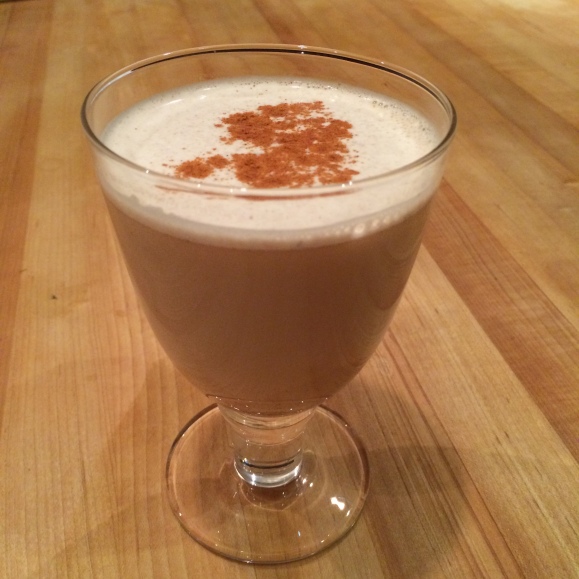 Okay I’m actually going to do this. While everyone else – including those in my own family – are pushing for a “dry January”, I’m going to be contrarian and promote the Devil’s water, also known as alcohol. Specifically, I am going to try to seduce you into drinking hot, buttered rum.
Okay I’m actually going to do this. While everyone else – including those in my own family – are pushing for a “dry January”, I’m going to be contrarian and promote the Devil’s water, also known as alcohol. Specifically, I am going to try to seduce you into drinking hot, buttered rum.
For starters, let’s look at the fact that drinking alcohol is not a new thing for humans. It’s probably pretty close to the oldest thing. In other words, we have evolved alongside drinking alcohol since the beginning. Ingesting fermented fruits and honey were an early window into the spirit world. Archeologists have found evidence of honey fermentation as long as 40,000 years ago. That’s not to say we haven’t been doing it for longer – just that’s all we can find hard evidence for. It is possible and largely speculated that humans settled down to farm in the cradle of civilization not primarily to grow food but to grow grains specifically for fermenting into alcohol. Have you ever noticed that humans are not entirely practical? (Ever seen Easter Island?) We don’t change our ways just for a bland food choice like sprouted grains. Nope, we dream bigger than that. Humans put to rest our nomadic ways in order to grow ancient barley to ferment into beer – a product that brought us closer to the gods and delivered us untold status. In other words, there would be no civilization without the promise of beer.
Now beer isn’t for everybody, and certainly not for celiacs or anyone with gluten/gut sensitivities, which includes anyone with auto-immune issues. Alcohol and wine isn’t for everyone either – particularly not anyone with addiction issues or possibly chronic, debilitating illness. No, alcohol is mostly for healthy people – and believe it or not – in moderation it actually promotes health.
In moderation, alcohol seems to prevent osteoporosis, various cancers (kidney, thyroid, Hodgkin’s and non-Hodgkin’s lymphoma and pancreatic cancers have been studied so far), gallbladder disease, Alzheimer’s disease and dementia, metabolic syndrome (the blanket pre-cursor to type II diabetes, obesity and heart disease), arthritis, enlarged prostate, macular degeneration, kidney stones, stress and depression, tremors and among other things, the common cold.
Now I’m not just talking about the resveratrol darling, red wine. A glass of red wine a day seems to be unequivocally better than not having a glass a day: for heart health, longevity, etc. But the benefits are not just from the antioxidant resveratrol (which is in pretty small amounts in a glass of wine); the benefits are mostly from the ethanol content itself.
SOME ETHANOL A DAY KEEPS THE DOCTOR AWAY
Again let me be very clear: I am not talking about binge drinking, or even drinking the way I have always known it. I’m only talking about moderate drinking which means from 1 – 2 alcoholic drinks per day, but mostly landing on one drink per day if you are a small woman and two drinks a day if you are a large man. One drink is a 5oz glass of wine or a 12oz can of beer or an ounce and a half shot of alcohol spirits. Period!
So before I go any further you are probably going to want some bullet points and some studies. I could do this all day, but here is a short selection:
- A study that examined nearly 10,000 men and women at age 23 and again at age 33 found that the moderate drinkers experience lower levels of poor general health, long-term illness, and psychological distress when compared to abstainers and heavy drinkers.(1)
- The National Institute on Alcohol Abuse and Alcoholism has found that the lowest death rate from all causes occurs at the level of one to two drinks each day.(2)
- Drinking alcohol in moderation (1-2 drinks per day for women and 2-4 for men) was found to reduce risk of mortality significantly according to meta-analysis of 34 studies of alcohol and total mortality among 1,015,835 men and women around the world.(3)
- A Harvard study found the risk of death from all causes to be 21% to 28% lower among men who drank alcohol moderately, compared with abstainers. (4)
- Harvard’s Nurses’ Health Study of over 85,000 women found reduced mortality among moderate drinkers. (5)
- A study of more than 40,000 people by the Cancer Research Center in Honolulu found that “persons with moderate alcohol intake appear to have a significantly lower risk of dying than nondrinkers.” (6)
- A review of the research reports that moderate drinking appears to reduce the risk of numerous diseases. “These include duodenal ulcer, gallstones, enteric infections, rheumatoid arthritis, osteoporosis, and diabetes mellitus (type II). Compared with abstainers, moderate drinkers exhibit improved mental status characterized by decreased stress and depression, lower absenteeism from work, and decreased dementia (including Alzheimer’s disease).” (7)
- Researchers examined the evidence from 33 studies and found that alcohol consumption increased neck bone density for each drink per day over the range of 0-3 drinks per day; reduced the risk for hip fracture with increasing quantities consumed; and was generally associated with reduced bone loss over time, compared with abstention from alcohol. (8)
- The National Osteoporosis Risk Assessment followed over 200,000 postmenopausal women in the U.S. with no previous diagnosis of osteoporosis who were seen at doctors’ offices, with no previous diagnosis of osteoporosis. As a result of screening, the study found that 39.6% had osteopenia or low bone density and 7% had osteoporosis. The study found that drinking alcohol reduced the chances of developing osteoporosis. (9)
- Scientists at the University of London concluded that light and moderate drinking saves more lives in England and Wales than are lost through the abuse of alcohol. If everyone abstained from alcohol, death rates would be significantly higher. (10)
Like I said, I could go on all day – but I’m going to stop there, and pause, to reflect on that last statement: “If everyone abstained from alcohol, death rates would be significantly higher.” In fact, that’s such a big deal that I’m going to make it a heading:
IF EVERYONE ABSTAINED FROM ALCOHOL, DEATH RATES WOULD BE SIGNIFICANTLY HIGHER
I know this seems shocking, but we have to step back and look at the cultural bias that we have all been raised under. We are a product of the pious Protestants, the people who burned witches (women, basically) and anyone who threatened the church’s power. We have a belief system that holds on dearly to the idea that alcohol is bad and leads to immoral acts (like enjoying sex, and having fun!). So let’s step back and take the long view. Biologically, we are not the product of the last 400 years. We are the product of millions of years – and for at least tens to hundreds of thousands of those years, our biology has adapted to drinking (or eating) some version or another of ethanol.
What we are NOT adapted to: abstaining from alcohol. It is literally unhealthy to abstain from alcohol, unless you have contraindications (like being an infant or in a growth stage, being pregnant or nursing, being on certain medications etc) or you are performing some kind of specific fasting period. So I’m going to give the “dry January” folks a green light since their teetotaling has an end date. Possibly taking a month off of alcohol also helps you to reset your tolerance and habits, and to better appreciate and respect alcohol once you reintroduce it.
WHY IS ETHANOL SO AWESOME
Alcohol, in moderation, appears to improve cholesterol particle size, while increasing HDL and decreasing LDL; it decreases thrombosis (blood clotting) and also helps make existing clots dissolve; it reduces blood pressure and reduces blood insulin levels; it increases blood flow to the brain which increases brain function; it increases coronary blood flow while decreasing coronary spasm reactions in response to stress (abstainers from alcohol have DOUBLE the stroke risk of moderate drinkers).
AN EXCEPTION: CERTAIN CANCERS
Alcohol seems to slightly increase levels of endogenous estrogen in the body, which is a risk factor for breast cancer and other estrogen-receptor positive tumors. So: if you have breast cancer or are already in a high-risk category for breast cancer – no booze for you! No sugar either, friend.
Possibly by another mechanism altogether, alcohol is positively associated with greater morbidity from colorectal cancer. So this doesn’t mean alcohol will put you at greater risk of getting colorectal cancer, just that if you already have it then get on the wagon and get out of here.
And obviously if you have cirrhosis of the liver, liver cancer or Hepatitis C or something similar, you shouldn’t drink any form of alcohol at all. But I didn’t have to tell you that. Like, duh.
HOW TO DRINK FOR BEST HEALTH
Now we are going to run into a problem pretty quickly because a lot of alcoholic drinks are also full of carbohydrates, and as we have explored previously, excessive carbohydrates are a menace leading to metabolic disorders like diabetes, heart disease and dementia; causing dysbiosis of the gut flora which presents as auto-immune diseases; as well as promoting and feeding cancer cells.
For example, a 12oz can of regular beer has about 13g of carbohydrates. If you drank two in a day, you would use up at least half, if not all, of the carbohydrate amount that I think you should be consuming in a day for optimum health (as recommended by the LCHF – Low Carbohydrate High Fat – loving Swedes and a long tradition of Northern Europeans). Now beer does have some nutrients to recommend it – a can has almost 13% of your RDA for Vitamin B6 and B3, and almost 2g of protein. It also has decent amounts of trace metals and minerals. However beer has negligible amounts of anything else. All those carbohydrates for such slim nutritional benefits is just not acceptable, in my opinion. Better to eat carbohydrates as broccoli, salad or tomato sauce.
Now a 5oz glass of wine has about 5g of carbohydrates. Actually it has 4g, but let’s face facts and recognize that you’re never going to pour yourself a measly 5oz glass of wine. For all of wine’s resveratrol and other anti-oxidant potential, a serving has less B vitamins than beer (by half), a little bit of iron and negligible protein. So it’s not a bad option by any means, but it is still a source of largely empty carbohydrates.
Now let’s talk spirits. A serving of spirits such as vodka, gin, whiskey, rum and tequila has no carbohydrates to speak of (and no protein, vitamins, minerals or otherwise). All of the sugars have been converted by fermentation into ethanol. The health problem with consuming spirits in moderation arises when you add margarita mix, cola and other cocktail blends. For example, an 8oz vodka tonic has 22g of carbohydrates, whereas vodka on its own has no carbohydrates.
Now there are all sorts of industries popping up creating low carb cocktails (hello, Skinny Girl) and even bartenders mixing up drinks with Splenda and Truvia. And while this is a possibility (but please try not to use nasty artificial sweeteners very often), it would be nice to find an alcoholic drink that is full of bona-fide nutrition.
WELCOME TO HOT, BUTTERED RUM
I’m choosing old-fashioned dark rum, distilled from cane sugar or molasses, because it was the first commercially produced spirit, and one of the oldest spirits humans have experimented with. Which means we might be pretty well adapted to it, all things considered. In its day, rum was considered medicinal and necessary. Again, there is a difference between a daily ration of rum and getting drunk on rum. In the 1600s, the sailor’s rum ration was “half a pint” or about 8oz per day, to be drunk at noon, but it is not known if that ration was pure or diluted with water by thrifty sea captains. A large and active sailor of yore could probably have metabolized a safe 4oz of rum per day and reaped the health benefits. However 8oz per day is NOT what I am suggesting; I am only suggesting between 1oz and 3oz per day, depending on body size.
1.5oz of rum is 80% “proof” or 80% full of health-promoting ethanol. On its own, rum has a pretty harsh kick to it, and burns going down.
To perfect this drink, add 1 Tbsp of pastured butter (Kerrygold, Organic Valley Pasture Butter etc), and top off with boiling water to melt the butter. The butter will give you 12g of fat (7g saturated) – remember that this is a good thing so long as we are not going to add any sugar. Saturated fat from appropriate sources (biodynamically pastured ruminants, for example) is the good fat! Saturated fat is made up of stable molecules, unlike polyunsaturated fats which have unstable electrons which easily oxidize and create damaging free radicals in the body. If you are looking for a safe, stable fat – butter and coconut oil are the bombs. The butter in this drink also has 8% of your vitamin A for the day and some CLA (conjugated linoleic acid) and Omega-3 fatty acids. Pasture butter’s vitamin A is perfectly balanced with vitamin D and vitamin K2 – the golden triad of vitamins for bone, heart and general health.
Now all you have to do is sip this concoction in front of a roaring fire and you are drinking hot, buttered rum.
LET’S KEEP GOING
Your basic hot, buttered rum is still a bit harsh for me.
So I like to add some spices: cinnamon, nutmeg and the tiniest bit of cloves. Maybe a bit of vanilla. Hey, why not some ginger – or add hot ginger tea instead of boiling water!? You could add up to a teaspoon of cinnamon, which contains 28 mg of calcium, 1 mg iron, 1 g fiber, and considerable vitamin C, K and manganese. Cinnamon improves insulin resistance, digestion and is a powerful anti-inflammatory.
And then for extra sweetness (and fat!) I add another tablespoon of coconut oil. There are no carbohydrates in coconut oil, but it has a sort of “sweet” mouthfeel to me. The coconut oil will add more CLA along with antimicrobial and antiviral properties. I don’t know HOW you could ever get a cold if you drink one of these every night.
The coconut oil will add 14g of fat (12g saturated). It will also essentially compete with the rum’s ethanol to enter brain cells, possibly protecting against brain cell tolerance to drinking – so that you can keep getting the same “feeling” of mild intoxication at the same level of alcohol. (This is complicated, but when an alcoholic gives up drinking booze cold turkey, her brain is barely able to function because it has sort of been adapted to run on ethanol instead of glucose. Take away the ethanol and the ethanol-adapted brain cells need time to adapt back to glucose, resulting in impaired brain function and withdrawal symptoms – but use coconut oil and the transition is easier and smoother. Short story: coconut oil is awesome for alcoholics too! Both for withdrawal, and for continued abuse!)
MY HOT, BUTTERED RUM RECIPE

I must be really healthy because I’ve almost finished my bottle of Mount Gay
- 1.5 oz dark rum
- 1 Tbsp pastured butter
- 1 Tbsp coconut oil
- up to a tsp cinnamon
- dash of vanilla, nutmeg and cloves
- mugful of boiling water or ginger tea
Now I throw it all in a blender, Vitamix or Magic Bullet and emulsify it until it turns a frothy caramel color. Pull up a chair to the roaring fire, lean into your knitting and drink up.
Happy New Year!
_____________________
REFERENCES CITED ABOVE
(1) Power, C., et al. U-shaped relation for alcohol consumption and health in early adulthood and implications for mortality. The Lancet, 1998, 352, 9131.�
(2) Highlights of the NIAAA position paper on moderate alcohol consumption. Press release from the journal, Alcoholism: Clinical & Experimental Research, July 14, 2004.�
(3) Di Castelnuovo, Augusto, et al. Alcohol dosing and total mortality in men and women: An updated meta-analysis of 34 prospective studies. Archives of Internal Medicine, 2006, 166, 2437-2445.�
(4) Camargo, C. A., et al. Prospective study of moderate alcohol consumption and mortality in US male physicians. Archives of Internal Medicine, 1997, 157, 79-85.�
(5) Fuchs, C. S., et al. Alcohol consumption and mortality among women. The New England Journal of Medicine, 1995, 332(19), 1245-1250.�
(6) Maskarinec, G., et al. Alcohol intake, body weight, and mortality in a multiethnic prospective cohort. Epidemiology, 1998, 9(6), 654-661.
(7) Power, C., et al. Goldberg, D. M., et al. Moderate alcohol consumption: the gentle face of Janus. Clinical Biochemistry, 1999, 32(7), 505-518.�
(8) Karina M. Berg, Hillary V. Kunins, Jeffrey L. Jackson, Shadi Nahvi, Amina Chaudhry, Kenneth A. Harris, Rubina Malik & Julia H. Arnsten. Association Between Alcohol Consumption and Both Osteoporotic Fracture and Bone Density
The American Journal of Medicine, 2008 (May), 121(5), 406-418.�
(9) Siris, E.S. Identification and fracture outcomes of undiagnosed low bone density in postmenopausal women: Results from the National Osteoporosis Risk Assessment. Journal of the American Medical Association, 2001, 286(22), 2815-2822.�
(10) Britton, A., and McPherson, K. Mortality in England and Wales attributable to current alcohol consumption. Journal of Epidemiology and Community Health, 2001, 55(6), 383-388.�
FURTHER READING
An introduction to LCHF
How to Eat More Butter
Pubmed article on alcohol as a risk factor in breast cancer. And another meta-analysis.
What sugar does for cancer (spoiler: promotes and feeds it!) and what a lack of sugar does (starves it out)
Want another weird drink that’s full of antioxidants and spices? Don’t forget to make The Crazy Hot Drink – it’s a Foundation Drink after all.
Why I don’t use hyperlinks within the body of my arguments anymore! I have also finally dug into my pockets for the $30 charge to eliminate ads from my blog. You’re welcome.



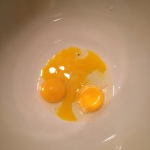


 Seriously, let’s not make a big deal about this. A couple organic beets, some water, some salt and an air-lock jar. It’s like 5 minutes and then you forget about it for 3 weeks.
Seriously, let’s not make a big deal about this. A couple organic beets, some water, some salt and an air-lock jar. It’s like 5 minutes and then you forget about it for 3 weeks.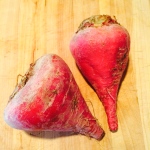
 Cut up the beets, LEAVING THE SKIN AND SKETCHY HAIRS on, into rough cubes – smaller than an ice cube but much larger than dice. If you make the beet cubes too small, they will release too much juice and sugar and you will get a different type of bacteria involved that works too quickly, creating more alcohol than lactic acid, and the whole thing will be wrecked. Bigger cubes mean the work will be slow and encourage the right kind of bacteria.
Cut up the beets, LEAVING THE SKIN AND SKETCHY HAIRS on, into rough cubes – smaller than an ice cube but much larger than dice. If you make the beet cubes too small, they will release too much juice and sugar and you will get a different type of bacteria involved that works too quickly, creating more alcohol than lactic acid, and the whole thing will be wrecked. Bigger cubes mean the work will be slow and encourage the right kind of bacteria. Po
Po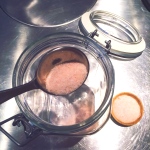
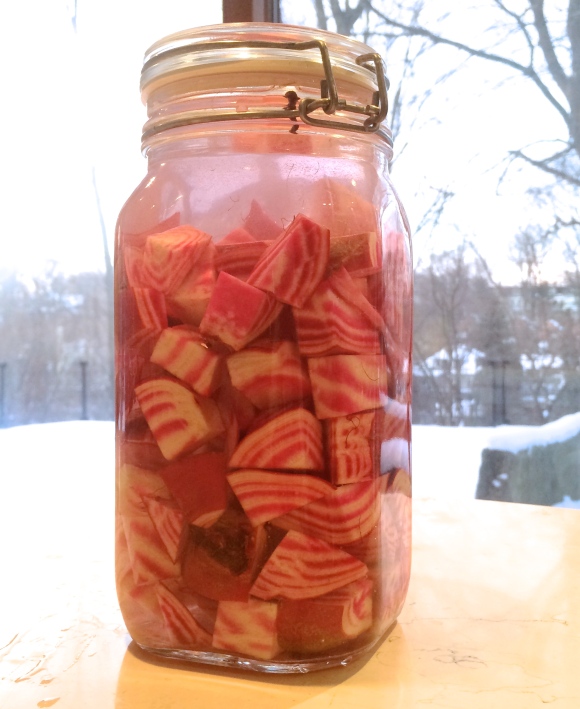

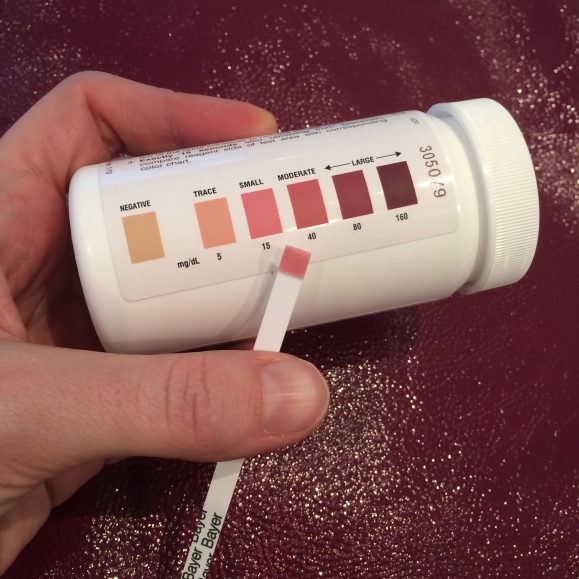
 Okay I’m actually going to do this. While everyone else – including those in my own family – are pushing for a “dry January”, I’m going to be contrarian and promote the Devil’s water, also known as alcohol. Specifically, I am going to try to seduce you into drinking hot, buttered rum.
Okay I’m actually going to do this. While everyone else – including those in my own family – are pushing for a “dry January”, I’m going to be contrarian and promote the Devil’s water, also known as alcohol. Specifically, I am going to try to seduce you into drinking hot, buttered rum.